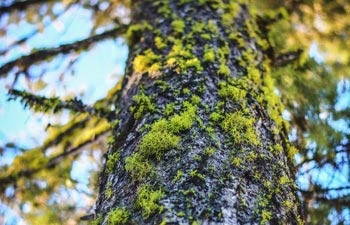How to Protect Your Trees

Trees add a certain natural charm to any property. As such, clients often ask us how they can best protect their trees.
Let Aaron’s Tree Service be your advisor and advocate for your trees. With over 20 years in the tree service business, we are familiar with how trees can get into trouble and how you can avoid these common pitfalls.
There are many dangers that could adversely affect the health of your trees, some of which include:
- Insects
- Severe Weather
- Improper Trimming and Pruning Practices
- Lawn Equipment (weed whackers, lawnmowers, etc.)
There are steps that can be taken to reduce the threats to your trees. At Aaron’s Tree Service, we try to empower our clients with the relevant information they need to best take care of their trees.
Remove Dead or Dying Limbs from Your Tree
There are three different types of insect activities that can cause harm to a tree: chewing, boring, and sucking. These activities threaten the structural integrity of the tree and sap precious resources from its body, such as sunlight and water. While there are many insects that can co-exist peacefully with your trees, bugs that cause this kind of damage must be prevented at all costs and swiftly dealt with following infestation.
A common entry point into your trees can result from dead or dying tree limbs. The weaker spots in the wood are perfect for insects to burrow and climb inside. When you notice dead limbs on your trees, be sure to call Aaron’s Tree Service as soon as possible. Through our tree trimming and pruning service, our tree experts will carefully cut the branches that leave your tree vulnerable to insects and subsequent disease. You can count on us to keep your trees healthy.
Give Your Tree Some Space
When mowing the lawn or weed whacking, it can be easy to accidently nick or cut your tree’s protective bark. When this happens, the open wound becomes a target for opportunistic insects to infest your tree. As a preventative measure, make sure to give your trees plenty of space when doing lawn maintenance that requires sharp blades. Your trees will appreciate it.
If your tree is already suffering from a wound, don’t fret. There are some curative measures you can take that will help your tree heal in no time. You shouldn’t worry about your tree’s ability to recover, unless the tree has suffered damage to more than 25% of its trunk.
In that case, the structural integrity of the tree should be investigated by one of our tree experts. In the event of a fresh wound, it is best to remove the wounded part of the trunk carefully so that all that is left is healthy material. As time passes, you will notice the tree start to close over the wound, creating a natural barrier of protection.
Don’t Use Spikes
Tree climbers sometimes attach spikes to their boots so that they can gain better footing while trimming and pruning branches. However, this technique can have lasting negative effects on your tree’s health.
When climbing spikes puncture the surface of your tree, it leaves behind a wound that makes it vulnerable to insect infestation and disease. Protect your tree’s bark by making sure spikes are never used on it.
Also be sure when hiring a tree service company, that their workers don’t use spikes on live trees. At Aaron’s Tree Service, we never allow our workers to wear spikes when pruning or trimming.
All of these tips can help you keep better care of your trees. If you ever have any concerns or are curious about other tree maintenance strategies, feel free to explore our website or call our Grand Rapids office. We are always happy to help.


